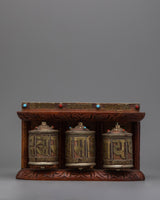
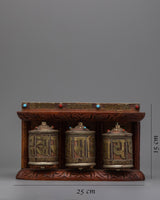
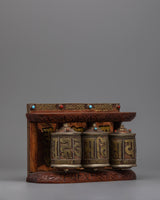
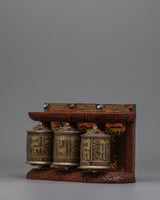
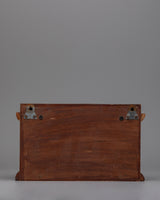
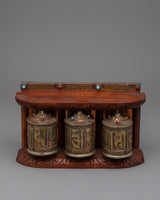

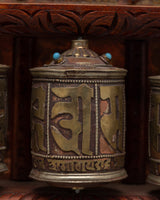
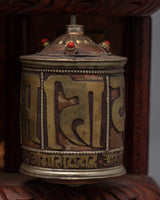
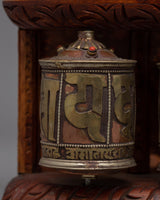
Buddhist Prayer Wheels Tibet | Authentic Ritual Tools for Meditation and Mantra Practice

100% AUTHENTIC

HANDMADE

FREE SHIPPING
Buddhist Prayer Wheels Tibet
The Buddhist Prayer Wheels Tibet are a stunning handcrafted set that perfectly captures the dazzling brilliance of Tibetan handicraft along with its profound spiritual legacy. This one-of-a-kind piece has three prayer wheels set on a durable wood wall frame. Each prayer wheel is expertly crafted from brass and copper. As prayer wheels spin to spread blessings and good energy, they have great cultural and spiritual significance in Tibetan Buddhism, which is reflected in their exquisite design and amazing details. Artificial stones such as coral and turquoise are inlaid.
The Buddhist Prayer Wheels Tibet are a great ornamental item as well as a practical spiritual tool for collectors, art enthusiasts, and spiritual practitioners. These three in one prayer wheels, when placed in a meditation area, on a holy altar, or as a classy accent piece in any environment, encourage introspection and respect. Its appreciated addition to any collection or religious setting is enhanced by the blend of brass and copper, while the wooden mounting provides a touch of authentic elegance. This item is more than just a pretty decoration; it's a significant relic that represents excellent craftsmanship and profound spiritual principles.
Material: Copper, Brass, Artificial stones: Turquoise,Coral




















